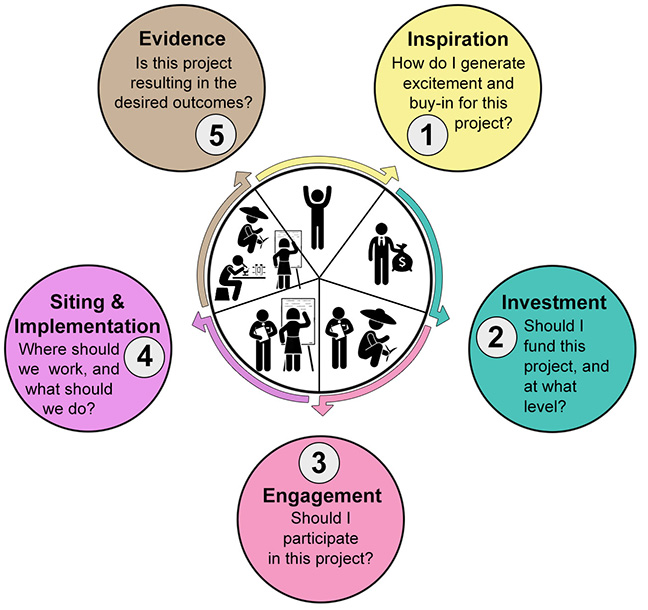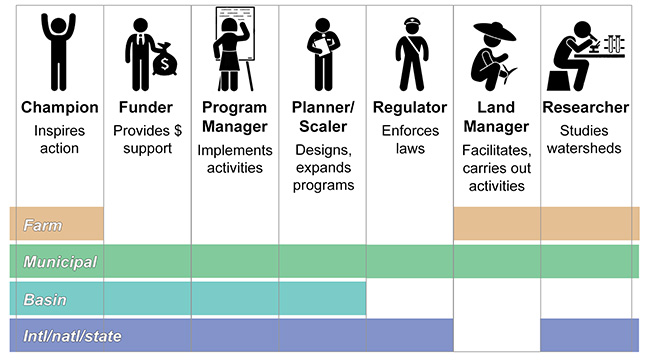

SPONSOR:
Belmont Forum
PROJECT PERIOD:
2016 – 2019
COLLABORATORS:
Leah Bremer, Perrine Hamel, Alex Ponette-Gonzalez, Patricia Pompeu, Sandra Saad, and Kate Brauman
ABSTRACT:
Beneficial active land management is becoming more common worldwide, which includes sustaining and enhancing clean and ample water supplies. To achieve this, watershed management programs need the support of hydrologic data and models. Promising efforts by the hydrologic community often go unused when the information program managers’ needs does not match the modeling efforts. We interviewed a wide range of participants in water management programs in Brazil and found five key areas where modeling and monitoring can support these programs: (1) inspire action and support, (2) inform investment decisions, (3) engage with potential participants, (4) prioritize location and types of activities at regional to national scales, and (5) evaluate program success. Our study emphasizes the importance of focusing on who will use the modeling results and tailoring the efforts to meet these needs. When grounded in real‐world contexts, hydrologic monitoring and modeling can play a small but critical role in supporting sustainable watershed management.
Project Publications:
Bremer, L.L., P. Hamel, A.G. Ponette-González, P.V. Pompeu, S.I. Saad, and K.A. Brauman. 2020. Who are we measuring and modeling for? Supporting multilevel decision-making in watershed management Water Resour. Res. 56(1). https://doi.org/10.1029/2019WR026011
Hamel, P., L.L. Bremer, A.G. Ponette-González, E. Acosta, J.R.B. Fisher, B. Steele, Cavassani A.T., C. Klemz, E. Blainski, and K.A. Brauman. 2020 The value of hydrologic information for watershed management programs: The case of Camboriú, Brazil. Sci. Total Environ. 75. https://doi.org/10.1016/j.scitotenv.2019.135871
Bremer, L.L., and K.A. Brauman. 2020. “Who are we measuring and modeling for? Supporting real-world watershed management.” UHERO Blog, March 11, 2020, https://uhero.hawaii.edu/who-are-we-measuring-and-modeling-for-supporting-real-world-watershed-management/ (in press at Global Water Forum)
PRINCIPAL INVESTIGATOR
